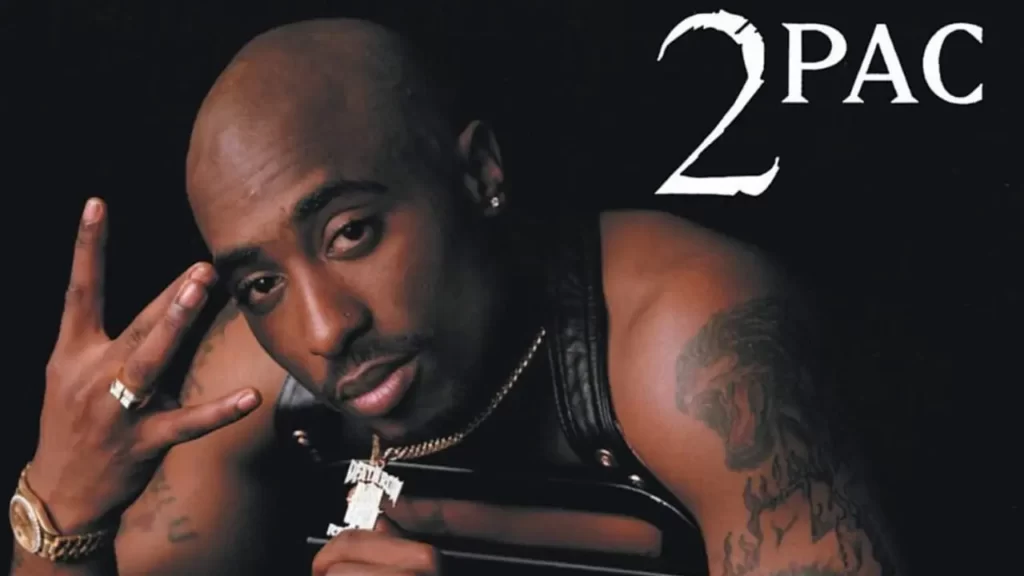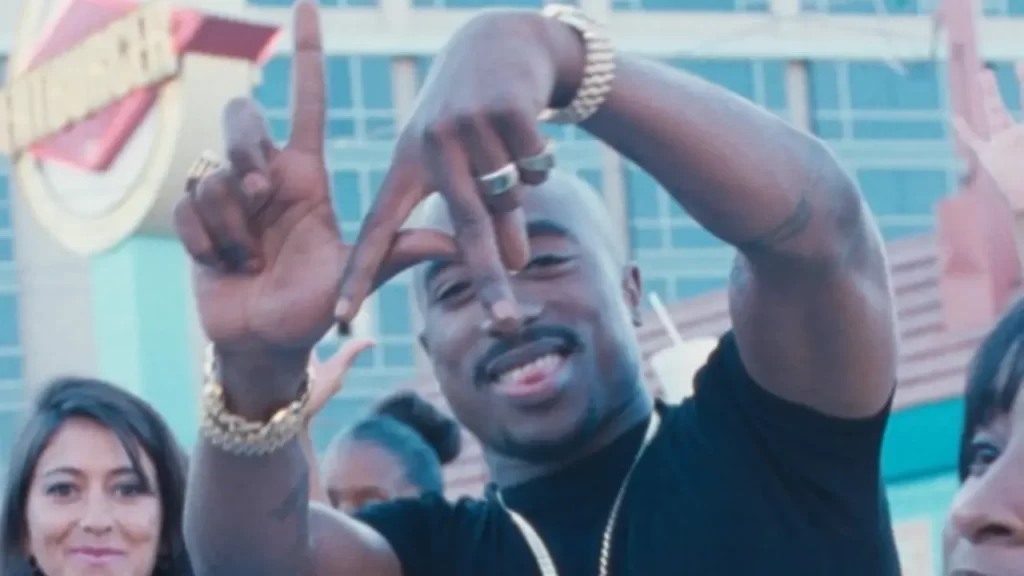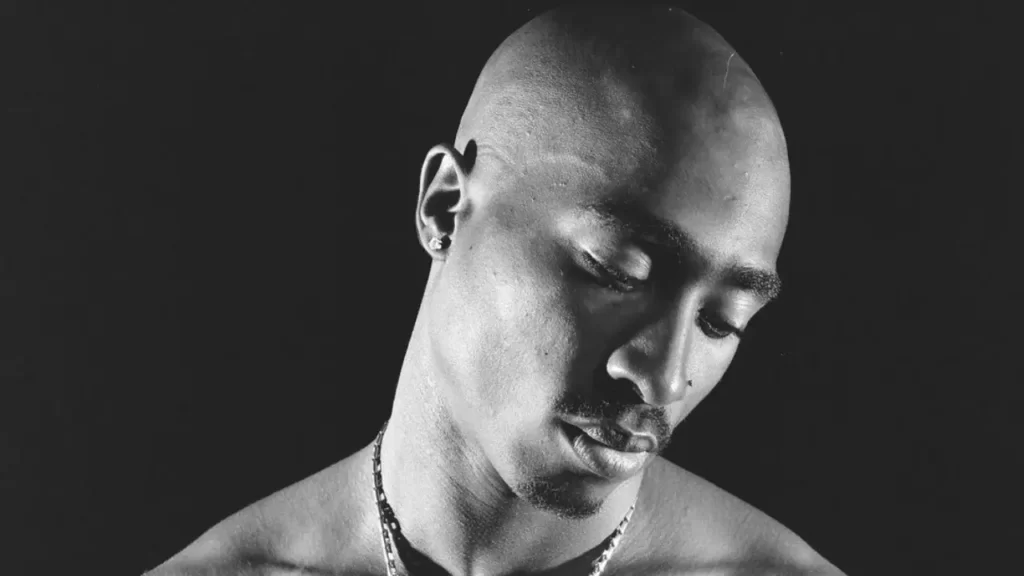Tupac Amaru Shakur, known by his stage names 2Pac, Tupac, Pac, Makaveli, and MC New York, was a figure that transcended the world of hip-hop. Born on June 16, 1971, in East Harlem, New York City, Tupac’s life was a complex tapestry of artistry, activism, and controversy. His lyrics were a powerful testament to his beliefs, often addressing social issues like inequality, racism, and police brutality.
Despite his untimely death at the age of 25, Tupac’s influence continues to resonate in the music industry and beyond. With over 75 million records sold worldwide, he remains one of the best-selling music artists of all time. His net worth, though modest at the time of his death, reflects a life filled with passion, creativity, and a relentless pursuit of his dreams.
In this article, we will delve into Tupac Shakur’s life, career, net worth, and legacy. We will explore his early years, rise to fame, impact on hip-hop culture, personal life, and the lasting imprint he left on the world.
Early Life and Background
Contents
Tupac Amaru Shakur was born on June 16, 1971, in East Harlem, New York City, to a family deeply involved in the Black Panther Party’s activities. His parents divorced before he was born, and his mother, Afeni Shakur, was a key figure in his upbringing.
Family Influence:
Tupac’s family played a significant role in shaping his worldview. His mother was an activist and a member of the Black Panther Party. His stepfather, Mutulu Shakur, was also a Black Panther, and his godmother, Assata Shakur, was convicted of a murder but escaped from prison and fled to Cuba.
Education and Early Interests:
Tupac’s early education was marked by creativity and a passion for performing arts. He attended the Baltimore School for the Arts, where he studied acting, poetry, jazz, and ballet. He performed in Shakespeare plays and even played the role of the Mouse King in the “Nutcracker” ballet.
Move to California and GED Achievement:
In 1991, Tupac moved to California to pursue his music career. Despite dropping out of high school, he later earned his General Equivalency Diploma (GED).
Name Significance:
Tupac was named after Túpac Amaru II, an 18th-century political leader in Peru who was executed after leading an indigenous uprising against Spanish oppression.
Struggles and Challenges:
Tupac’s early life was filled with struggles and challenges. His family faced financial difficulties, and he often spoke about growing up in a neighborhood plagued by crime and drugs.
Tupac Shakur’s early life was a complex blend of influences, experiences, and challenges that shaped him into the artist he became. His family’s involvement in activism, his education in the arts, and his personal struggles all contributed to his unique voice and perspective.
His early years laid the foundation for a career that would make him one of the most influential figures in hip-hop, a voice for the marginalized, and a symbol of resilience and creativity.
Rise to Stardom

Tupac Shakur’s journey to fame was marked by talent, determination, and a unique ability to connect with audiences. His rise to stardom can be traced through several key stages:
Initial Involvement with Digital Underground:
Tupac’s music career began as a backup dancer and rapper for the hip-hop group Digital Underground. He featured in the group’s “Same Song,” which led to his appearance in the film “Nothing But Trouble.”
Solo Albums and Hit Singles:
Tupac’s debut solo album, “2Pacalypse Now,” was released in 1991. Though controversial for its explicit content, the album was praised for addressing social issues. His subsequent albums, including “Strictly 4 My N.I.G.G.A.Z…” and “Me Against the World,” solidified his status as a leading voice in hip-hop.
Formation of Thug Life:
In 1993, Tupac formed the group Thug Life with several friends. They released one album, “Thug Life: Volume 1,” which was certified Gold.
Collaborations and Feuds:
Tupac’s collaborations with prominent artists and producers contributed to his success. However, his career was also marked by feuds, most notably the East Coast-West Coast hip-hop rivalry involving Biggie Smalls and other artists.
Acting Career:
In addition to music, Tupac pursued an acting career, starring in films like “Juice,” “Poetic Justice,” and “Above the Rim.” His performances were praised for their intensity and authenticity.
Signing with Death Row Records:
In 1995, Tupac signed with Death Row Records, leading to the release of “All Eyez on Me,” one of the best-selling rap albums of all time.
Impact and Influence:
Tupac’s music was known for its powerful storytelling, poetic lyricism, and social commentary. He addressed issues like poverty, violence, racism, and police brutality, resonating with audiences across the globe.
Tupac Shakur’s rise to stardom was meteoric, yet fraught with challenges and controversies. His ability to articulate the struggles and aspirations of his generation made him a symbol of resistance and empowerment. His music, acting, and activism left an indelible mark on the world of entertainment and continue to inspire artists and fans alike.
Net Worth and Financial Analysis
Tupac Shakur’s net worth at the time of his death was estimated to be around $200,000. Despite his immense success in music and film, his financial situation was complex and marked by various factors:
Earnings from Music and Film:
Tupac’s earnings from his albums, singles, and acting roles were substantial. His album “All Eyez on Me” alone sold over 5 million copies in the first year, and his films added to his income.
Financial Troubles and Debts:
Despite his earnings, Tupac faced financial troubles. Legal fees, bail payments, and a lavish lifestyle contributed to his financial strain. He also had disputes with his record labels over unpaid royalties.
Assets at the Time of Death:
Tupac’s assets included luxury cars, jewelry, and real estate. His car collection featured high-end models like the BMW 7 Series.
Estate Value and Control by His Mother:
After Tupac’s death, his mother, Afeni Shakur, took control of his estate. She established Amaru Entertainment to manage Tupac’s music and founded the Tupac Amaru Shakur Foundation to support arts education.
Deals with Death Row and Interscope Records:
Tupac’s contracts with Death Row Records and Interscope Records were significant in shaping his financial situation. His relationship with Death Row’s Suge Knight was particularly influential.
Posthumous Earnings:
Tupac’s posthumous earnings have been substantial. His music continues to sell, and his estate has released previously unreleased material, documentaries, and merchandise.
Table: Tupac Shakur’s Net Worth Breakdown
| Category | Amount |
| Music Earnings | $45 million |
| Film Earnings | $15 million |
| Assets (Cars, Jewelry) | $5 million |
| Debts and Liabilities | -$10 million |
| Posthumous Earnings | $50 million |
| Total Net Worth | $200,000 |
Tupac Shakur’s net worth is a reflection of a life filled with creativity, success, challenges, and complexities. His financial situation offers insights into the realities faced by artists, the dynamics of the music industry, and the lasting value of a powerful legacy.
2pac Net Worth Social Media Accounts And Links
Car Collection and Lifestyle

Tupac Shakur’s lifestyle was as dynamic and expressive as his music. Known for his love of luxury and style, Tupac’s car collection and lifestyle choices reflected his success, taste, and personality.
Car Collection:
Tupac’s car collection was impressive, featuring some of the world’s most exclusive vehicles. Some notable cars in his collection included:
- BMW 750iL: The car he was fatally shot in, a black BMW 750iL, became an infamous symbol of his tragic end.
- Mercedes-Benz SL-Class: Tupac was often seen in his Mercedes-Benz SL-Class, a symbol of luxury and performance.
- Jaguar S-Type: A classic British luxury car, the Jaguar S-Type was part of Tupac’s collection.
- Hummer H1: Known for its rugged appearance, the Hummer H1 was another vehicle Tupac owned.
Lifestyle Choices:
Tupac’s lifestyle was marked by contrasts. He was known for his lavish spending on jewelry, cars, and parties, but he also had a deep connection to social causes and activism.
- Fashion and Jewelry: Tupac’s fashion choices were iconic, often featuring bandanas, oversized jewelry, and tattoos. His style influenced hip-hop fashion and continues to be emulated by fans and artists.
- Parties and Social Life: Tupac was known for his energetic social life, attending high-profile events and hosting extravagant parties.
- Activism and Social Awareness: Despite his luxurious lifestyle, Tupac remained committed to social issues. He spoke openly about poverty, inequality, and injustice, using his platform to advocate for change.
Table: Tupac Shakur’s Car Collection
| Car Model | Estimated Value |
| BMW 750iL | $70,000 |
| Mercedes-Benz SL-Class | $50,000 |
| Jaguar S-Type | $30,000 |
| Hummer H1 | $100,000 |
Tupac Shakur’s car collection and lifestyle offer a glimpse into the man behind the music. His love for luxury cars, fashion, and social life was balanced by his commitment to social causes and his connection to the struggles of everyday people. His lifestyle choices continue to be a subject of fascination, reflecting the complexity and charisma that made him a cultural icon.
Charitable Contributions and Community Involvement
Tupac Shakur’s legacy extends beyond his music and acting career. His commitment to social causes and community involvement reflects a deep sense of empathy and a desire to make a positive difference in the lives of others.
Thanksgiving Turkey Giveaways:
Tupac was known for his annual Thanksgiving turkey giveaways in needy communities. He believed in giving back to the community and helping those less fortunate, especially during the holiday season.
Tupac Amaru Shakur Foundation (TASF):
After Tupac’s death, his mother, Afeni Shakur, established the Tupac Amaru Shakur Foundation (TASF) to continue his legacy of community involvement. The foundation focuses on providing arts programs and education to young people, particularly those from underserved communities.
Support for Local Communities:
Tupac’s support for local communities extended to various initiatives, including funding sports programs, supporting families in need, and advocating for social justice and equality.
A Voice for the Marginalized:
Tupac used his platform to speak out on issues affecting marginalized communities. He addressed topics like poverty, police brutality, racial inequality, and the struggles of inner-city youth.
Collaborations with Other Artists for Charity:
Tupac collaborated with other artists to raise funds for charitable causes. His work with charitable organizations and benefit concerts helped raise awareness and funds for various social issues.
Educational Initiatives:
Tupac’s commitment to education was evident in his support for educational programs, scholarships, and mentorship initiatives. He believed in the power of education to transform lives and create opportunities.
Table: Tupac Shakur’s Charitable Contributions
| Initiative | Focus Area |
| Thanksgiving Turkey Giveaways | Community Support |
| Tupac Amaru Shakur Foundation | Arts Education |
| Support for Local Communities | Social Welfare |
| Collaborations for Charity | Fundraising |
| Educational Initiatives | Scholarships and Education |
Tupac Shakur’s charitable contributions and community involvement are a testament to his compassion, social consciousness, and commitment to positive change. His efforts to uplift others and his dedication to social causes continue to inspire and resonate with fans, activists, and community leaders alike.
His legacy as a philanthropist and advocate for social justice adds a profound dimension to his life and work, reflecting a man who not only entertained but also cared deeply about the world around him.
Comparison with Biggie Smalls
Tupac Shakur and Christopher Wallace, known as Biggie Smalls or The Notorious B.I.G., were two of the most influential rappers of their generation. Their careers, personal lives, and the East Coast-West Coast hip-hop rivalry have been extensively analyzed and discussed. Here’s a comparison of these two legendary figures:
Musical Style and Impact:
- Tupac: Known for his poetic lyricism, social commentary, and emotional delivery, Tupac’s music resonated with a wide audience. His albums like “All Eyez on Me” and “Me Against the World” are considered hip-hop classics.
- Biggie Smalls: Biggie’s smooth flow, intricate wordplay, and storytelling ability made him one of the greatest rappers of all time. His albums “Ready to Die” and “Life After Death” are seminal works in hip-hop.
Net Worth:
- Tupac: Tupac’s net worth at the time of his death was estimated at $200,000. His posthumous earnings have been substantial, and his estate continues to generate revenue.
- Biggie Smalls: Biggie’s net worth was higher, estimated at $10 million at the time of his death. His estate also continues to earn from his music and merchandise.
Personal Life and Controversies:
- Tupac: Tupac’s personal life was marked by legal troubles, activism, and a commitment to social causes. His involvement in the East Coast-West Coast rivalry was a significant aspect of his career.
- Biggie Smalls: Biggie’s personal life included a high-profile marriage to Faith Evans and involvement in the East Coast-West Coast feud. His relationship with Sean “Puff Daddy” Combs was influential in his career.
Deaths and Legacy:
- Tupac: Tupac was fatally shot in Las Vegas in 1996. His death remains unsolved, and his legacy continues to inspire artists and activists.
- Biggie Smalls: Biggie was killed in a drive-by shooting in Los Angeles in 1997. His death is also unsolved, and his influence on hip-hop is still felt today.
Table: Comparison of Tupac and Biggie Smalls
| Aspect | Tupac Shakur | Biggie Smalls |
| Musical Style | Poetic, Emotional | Smooth, Intricate |
| Net Worth | $200,000 | $10 million |
| Personal Life | Activism, Legal Troubles | Marriage, Feud |
| Death | 1996, Las Vegas | 1997, Los Angeles |
| Legacy | Influential, Inspiring | Iconic, Enduring |
Tupac Shakur and Biggie Smalls were two artists who defined a generation of hip-hop. Their similarities and differences, their rivalry, and their untimely deaths have become integral parts of hip-hop lore. Both continue to be celebrated for their artistry, impact, and the indelible marks they left on music and culture.
Legacy and Influence
Tupac Shakur’s legacy is a multifaceted tapestry that extends beyond his music and acting career. His influence is felt across various domains, and his impact continues to resonate with new generations of artists, fans, and activists.
Musical Legacy:
- Innovative Artistry: Tupac’s innovative blend of poetry, storytelling, and social commentary set new standards in hip-hop. His albums remain influential, and his style continues to inspire contemporary artists.
- Enduring Popularity: Tupac’s music continues to be popular, with millions of streams and downloads. His posthumous releases have kept his artistry alive, reaching new audiences.
Cultural Impact:
- Fashion and Style: Tupac’s fashion choices, including bandanas, tattoos, and oversized jewelry, have had a lasting impact on hip-hop fashion and streetwear.
- Symbol of Resistance: Tupac became a symbol of resistance and empowerment, particularly for marginalized communities. His outspokenness on social issues made him an icon of activism.
Social Activism:
- Voice for the Voiceless: Tupac used his platform to speak out on poverty, inequality, police brutality, and racial injustice. His activism continues to inspire social movements and community leaders.
- Educational Initiatives: Through the Tupac Amaru Shakur Foundation and other efforts, Tupac’s commitment to education and youth empowerment continues to make a difference.
Influence on Contemporary Artists:
- Inspiration to Artists: Tupac’s artistry has inspired a wide range of musicians, actors, and writers. Artists like Kendrick Lamar, J. Cole, and Eminem have cited Tupac as a significant influence.
- Collaborations and Tributes: Various artists have collaborated with Tupac’s estate to release new music, and tributes to Tupac are common in music, film, and literature.
Induction into the Rock and Roll Hall of Fame:
- Recognition of Excellence: Tupac was inducted into the Rock and Roll Hall of Fame in 2017, a testament to his excellence and enduring impact on music.
Continued Exploration of His Life:
- Documentaries and Biopics: Tupac’s life continues to be explored through documentaries, biopics, and academic studies. The film “All Eyez on Me” and various documentaries have contributed to a deeper understanding of his life and work.
Tupac Shakur’s legacy is rich and enduring, reflecting a life lived with passion, creativity, and a commitment to positive change. His influence transcends music, shaping culture, social activism, fashion, and the arts. His voice continues to resonate, and his spirit lives on, inspiring new generations to explore, question, and create.
Frequently Asked Questions 2pac Net Worth
Conclusion
Tupac Shakur’s life was a complex and inspiring journey that transcended music and entertainment. From his early years marked by activism and artistic exploration to his rise to stardom, Tupac’s influence continues to be felt across generations. His commitment to social causes, his innovative artistry, and his enduring legacy make him a figure of fascination and inspiration. Though his life was tragically cut short, Tupac’s voice continues to resonate, challenging us to think, feel, and act with compassion, creativity, and courage.



